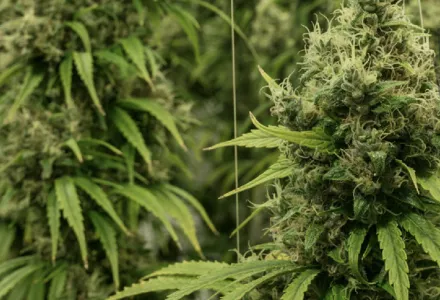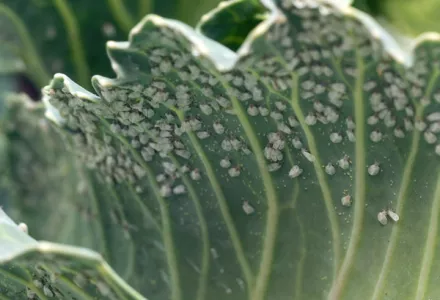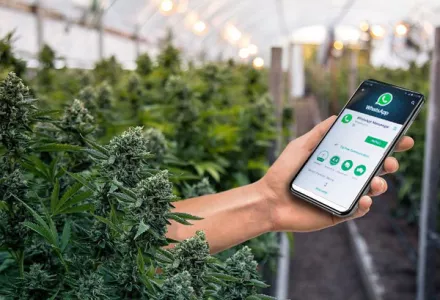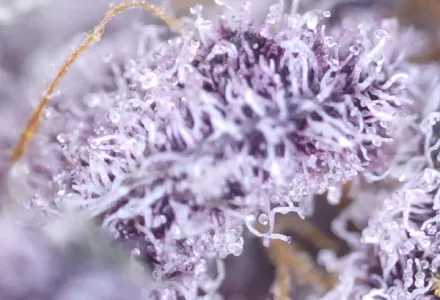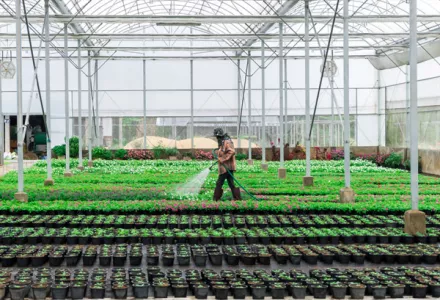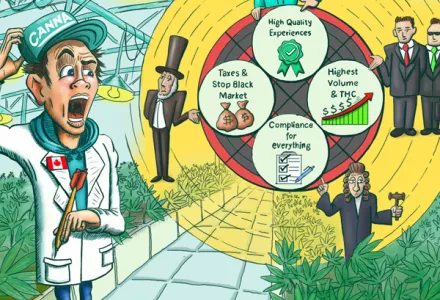How terpene evaporation during cannabis curing & storage invisibly steals value in 7 ways.
After months of toiling and fussing over your cannabis crop, you're finally able to harvest and dry your expansive forest of beautiful plants. You're proud of how great your plants look, and ready to reap the benefits of all your hard work.
However, there's an invisible thief you've likely overlooked, ready to steal an astounding amount of the value you've created: Terpene evaporation.
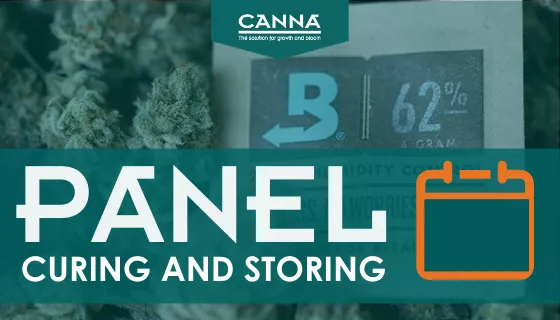
This was the startling "Aha!" moment from the discussion about Curing and Storage at our November 2021 Passionate Growers Hub, led by Jed Walker, Canadian Account Executive for Boveda. Boveda is a global leader in 2-way humidity control for cigars, medical cannabis and wood instruments.' The Curing and Storage session also included Alexander Gauthier, Master Grower of Origine Nature, and Patrick Scanlon, Cofounder and Master Grower LP at CannTx Life Sciences Inc.
Jed shared the cause and effects of terpene evaporation, including 7 ways it can pull substantial value out of your harvested cannabis crop. Don't freak out just yet -- Jed also shared how to control humidity of your cannabis product to prevent that expensive loss. This article is largely a condensation of his talk.
By the way, when we're discussing evaporation here, we're not talking about transpiration, which is evaporation though your plants' leaves' stomata while your plant is alive. We're focused instead on terpene evaporation during the curing and storage phase, after your plant has been harvested and dried.

The importance of humidity control to prevent terpene evaporation
During cannabis curing and storage, Licensed Producers usually try to keep cannabis relative humidity between 55% at the low end and 65% at the top end. Why does that matter? If you're in that range, the monolayer of moisture holds in the terpenes to the trichome.
But if your humidity goes outside that 55% to 65% range, you lose the monolayer of moisture, causing the terpenes attached to the trichrome to evaporate into the headspace of your storage, whether it's a Tubby or bags or even the final packaging. Those valuable terpenes are no longer in the flower, they are in the air.
And that matters a lot. Let's uncover how evaporation causes multiple negative outcomes worth better understanding.
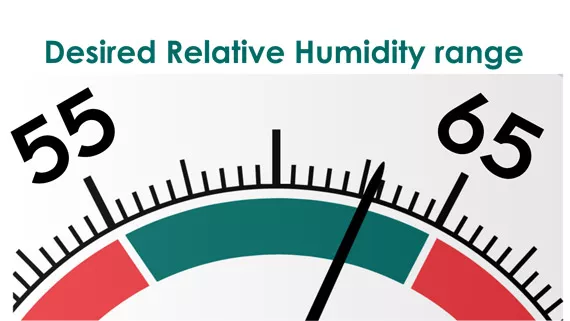
How evaporation after cannabis harvest invisibly steals value in 7 ways
1. Loss of full recreational effect with evaporated terpenes
According to Jed Walker, Boveda's research has shown that up to 40% of terpenes can be lost to evaporation during just the first 7 days after curing! And the loss of those terpenes really does take away from the experience of consuming that flower. Particularly vulnerable to evaporation are the lighter, more volatile monoterpenes, such as pinene, myrcene, limonene, terpinolene, and dozens more.
You want to keep everything locked in as long as you can, so that you get the full effect when consuming. And I think a lot of people talk about the entourage effect, which is kind of like the CBD and THC is what people understand. But the terpene profile has a lot to do with that as well, and if your terpenes have evaporated into the bag, you're missing a lot of the effect of the potential flower.
- Jed Walker, Boveda
The heavier terpenes, called sesquiterpenes, are less likely to evaporate. But the ratio of monoterpenes to sesquiterpenes also changes with evaporation, creating a different entourage effect than the grower intended and consumer expects.
Microscopic trichome bulbs subject to evaporation
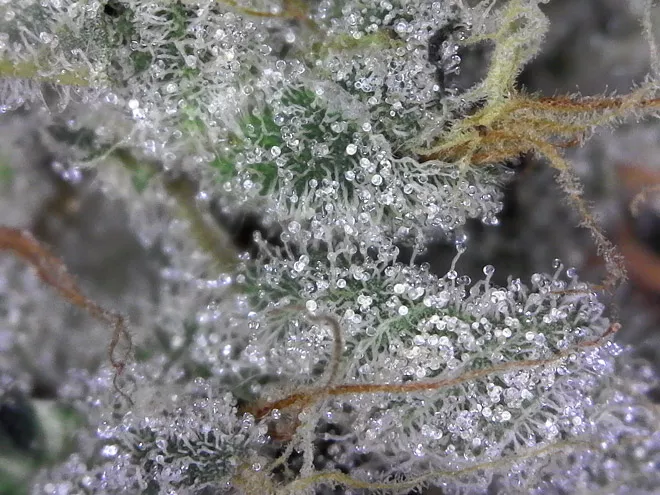
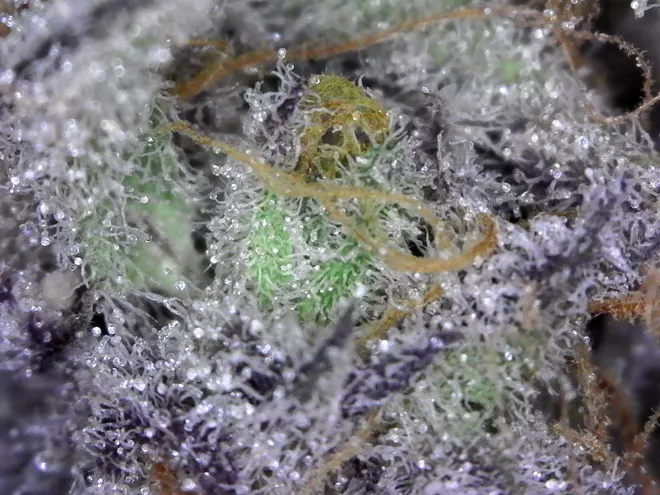
2. Loss of potential medicinal effect
(for info about potential medicinal benefits please consult your doctor)
Just as the loss of terpenes lowers the potency and the potency of consuming that flower, evaporation of terpenes also reduces the potential medicinal effect.
Cannabis monoterpenes (again, monoterpenes are the first to evaporate) with potential medicinal benefits include Pinene, Myrcene, Limonene, Terpinolene.
Loss of terpenes will also lessen the potential effect from the combination of terpenes and cannabinoids.
3. Avoid potential mold when your cannabis is stored at too high humidity level
If your stored cannabis has too high relative humidity, it can be dangerous. If you're above 65%, you're in that zone where there could be Aspergillus mold growth. Aspergillus can make consumers severely ill, especially if they have a compromised immune system.
4. Loss of quality achieved through excellent growers' efforts during the many stages from grower to consumer
Growers provide quality on their end. They work so hard to make sure they have the right strain, product, and processes to produce an awesome flower. Growers want to retain the same high quality of the flower from when it was cured to the moment when the consumer consumes it.
But when cannabis endures too low humidity during storage, the growers' high quality product turns into super dry crumbly, where you can't even grind it because it turns to dust. We want to avoid that.
And high-quality cured cannabis that growers worked so hard to achieve can go through so many steps before it reaches the final consumer in the legal market:
- By the time you process it, or if you only have a wholesale license, then you could be holding on to that flower for potentially weeks, if not months, until you get the right quantity to ship off to someone who does have a sales license, such as another LP.
- Then the next LP or wholesaler has the stored cannabis for a time.
- Then it gets to the final packaging processor, then they're spending a week or two dealing with it.
- Then it goes to the government distribution agencies who may not be so fast to act.
- Then it goes from there to the retail stores that are selling the end-product to consumers.
So while the grower may think, "Well, I just cured it, I packed it, we're good to go." However, it might be months before it gets to the actual consumer. Through evaporation during that extended timeframe, the cannabis is losing terpenes, quality, water weight, etc.
Quality is why humidity control is so important -- it helps growers get their product to the end consumer the way they want it with the effect and quality that the grower intended with that strain.
- Jed Walker, Boveda
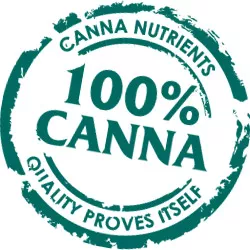
What if the grower is also the consumer -- when growing for private usage only? Then maintaining quality for the weeks and months after harvest also remains important, as a private grower will likely not be able to consume all their crop in just 1 week.
5. Loss of sellable product weight from weeks or even months of water evaporation
From the perspective of growers and LPs, keeping relative humidity at the same level will hold the water weight. That matters a lot, because, at the end of the day, anyone who's growing is getting paid by the gram, that's the nature of the business. So while we have been focused in this article almost exclusively on terpene evaporation, just regular water evaporation can create sizable revenue loss for growers, and everyone involved in the stages between the grower and the consumer.
6. Loss of reputation and future sales
When growers maintain humidity control past the point of curing to the point of consumption, they provide the full quality of the flower to consumers. When growers don't take steps to maintain humidity at the 55% to 65% range, their products can be sold at retailers and dispensaries with a relative humidity well below 50%. And at that point too many of the terpenes have evaporated from that flower. So the consumer gets a poorer product, and finds it isn't what they wanted or not the right flavor, not the right effect. So they're going to try something else, eroding brand loyalty.
7. Potential future issues with Health Canada, if they start regulating the Terpene profile
It's possible that Health Canada may start regulating that cannabis products maintain a consistent terpene profile. That's because different terpene profiles provide different results from health and high perspectives. That would be a problem when your terpene profile varies too greatly with evaporation. This is something that HC has not implemented yet. But it is worth considering being ahead of the curve and protecting your quality.
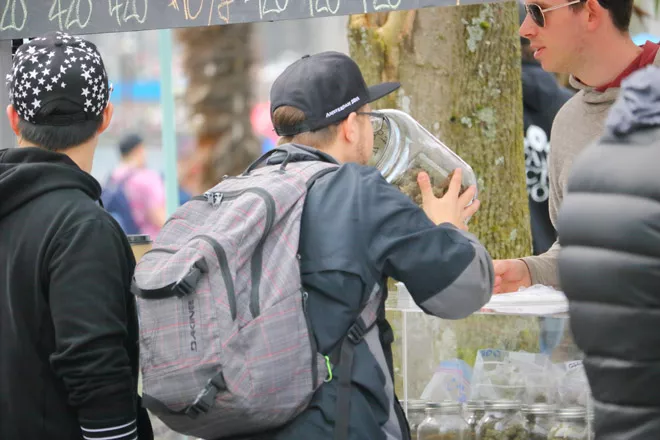
Your nose has been wrong all along: why a great smell in the jar is a sign of terpene evaporation and thus a very bad thing
Session panelist Patrick Scanlon, cofounder and master grower of LP Caltech Life Sciences, asked Jed Walker about how their cannabis, which stored with Boveda, simultaneously lost some "nose in the jar" while NOT losing terpenes. This section summarizes Jed's answer.
One by-product of cannabis stored at the proper humidity range: It doesn't smell "right" anymore. But right was wrong!
In the old-school world, when you opened a cannabis bag or jar, you likely had a sniff, and thought, "Oh, wow, that's some really heady, awesome weed!" You relied on the smell test as a gauge of quality.
But what you actually smelled was too many of the valuable terpenes evaporating from the flower, prior to you getting to consume it. Those diminished terpenes, flavonoids and flavor change the potency and the entourage effect. So that smell you may find comforting is actually a bad sign that you have lost some terpenes.
It's time to change your perspective.
When you control stored cannabis to keep its humidity between 55% to 65%, you keep the monolayer of moisture intact, which locks in those terpenes to the trichomes. You may notice that the nose in the jar disappeared a little bit, and thought something was wrong.
But that reduction in aroma is actually a very good thing. Because when you do go to consume the flower, then you will get the full terpene effect.
Storage tips for preserving your cured cannabis
So now you really know the value of controlling the humidity level of your stored cannabis. But how do you best maintain a consistent humidity level?
You need at least two things. First, an air-tight container, such as mason jars or other vacuum-sealed jars,and for long-term storage, up your game to Cvaults. Make sure the container has a neutral charge. Second, inside that container with your cannabis, have a two-way humidity control pack (like Boveda® or VaporBeads) that automatically increases or decreases the container's humidity level as needed. Store your containers out of direct sunlight in a cool, dry place.
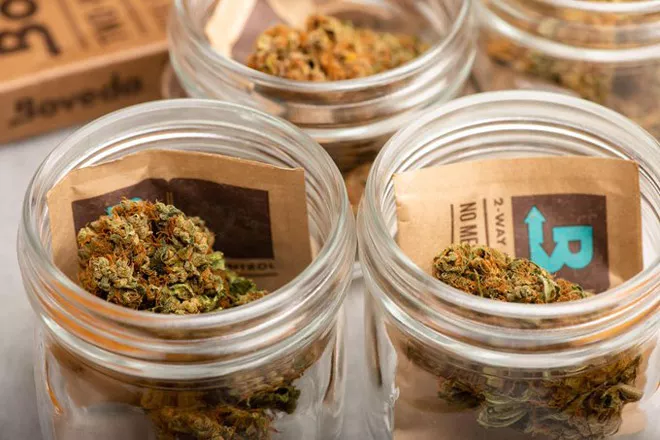
For long term storage it is better to avoid Ziplok, freezer and turkey bags because they are not airtight enough to regulate humidity levels. Plus, the plastic bags will impart their smell to your cannabis, and they generate a static charge that can pull the trichomes off your buds. (That also means avoiding plastic medicine bottles). Tupperware or Rubbermaid tubs provide better air-tight storage, but again, plastic -- however, you can wrap your cannabis in parchment paper to keep it from touching the plastic tub sides. When using tin cans, make sure the lid has a rubber seal to make it air-tight. Don't store in the freezer, because that can make your cannabis dry and brittle.
Never mix strains in the same container, as this will impact the flavor profiles. And one last piece of advice, put a date on the container so you can practice First In, First Out.
Regulate your stored cannabis humidity and stop the invisible terpene thief!
We hope you have a clearer understanding of the potential pitfalls of poor cannabis humidity control, especially terpene evaporation, to the value of your cured and stored cannabis product.
We welcome Canadian growers from all walks of life, whether you're a home grower, craft grower, Licensed Producer, or a consultant. So long as you grow with passion and want to share your passion with other growers, you're welcome to be a part of the community. We'll also notify you whenever we post new articles that might interest you and your fellow passionate growers.

In Memoriam: Jed Arnold Walker
1979 - 2021

We were shocked to learn that Jed Walker passed away in January 2021, just two months after his session at our CANNAtalk Hub. Jed exemplified everything good about the Canadian cannabis industry: caring, enthusiastic, friendly, adventurous, knowledgeable and giving.
The Canadian CANNA team will never forget the moments we spent together. He will be greatly missed by all that knew him.

